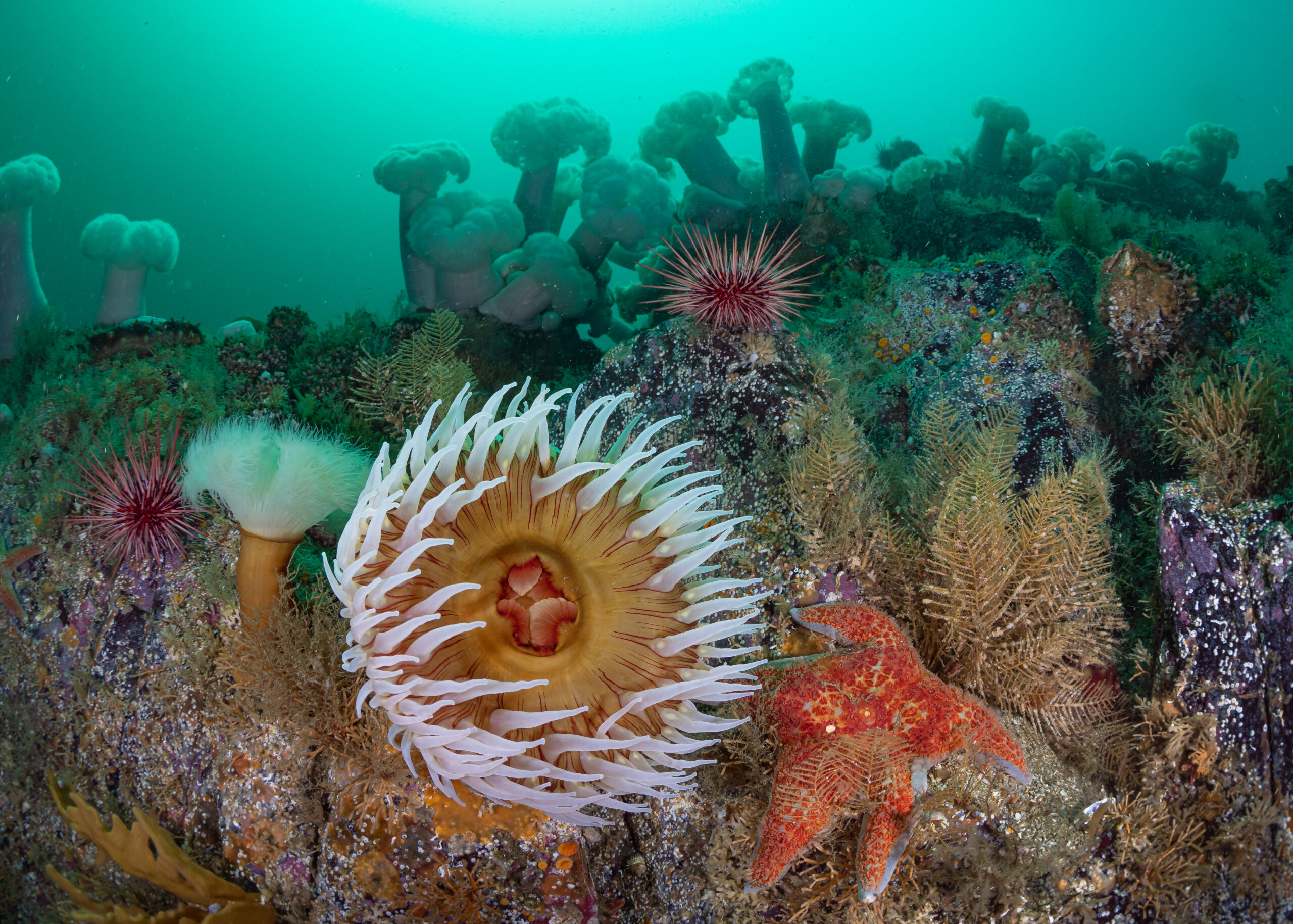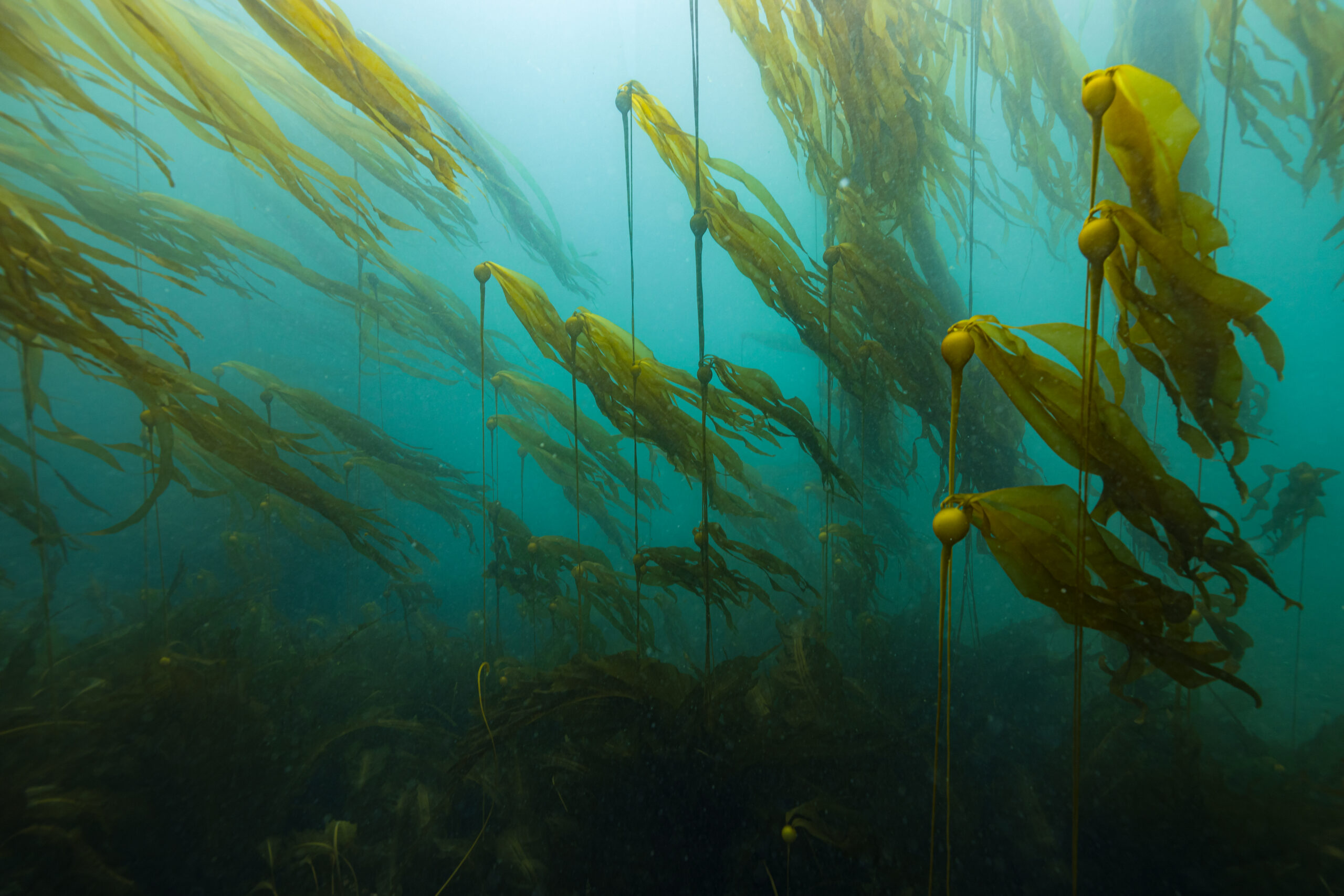
5 things to know about Winnipeg’s big sewage problem
115 billion litres, 70 years to fix, $5.5 billion in lawsuits
The Canadian Parks and Wilderness Society (CPAWS) issued a stark warning in a report released this week that federal protections for several ocean conservation areas are too weak to meet their goals of preserving or restoring marine biodiversity.
“Our oceans are in trouble,” said Alex Barron, the national director of CPAWS’ ocean program.
In the face of declining fisheries, a growing number of at-risk species and habitat loss, marine protected areas (MPAs) are “one of the most effective conservation tools we have,” she said.
“They’re really equivalent to parks on land,” said Natalie Ban, an environmental studies professor at the University of Victoria and one of more than 40 international experts who contributed to the development of the MPA guide, a framework published in the journal Science in September that can be used to evaluate, strengthen and plan marine protected area regulations.
These marine protected areas can serve as a vital refuge for marine life from myriad threats, but only with strong protections and effective management, Barron said.
According to the federal government, almost 14 per cent of Canada’s marine and coastal areas are protected through various measures, which means the country has exceeded its target under the United Nations Convention on Biological Diversity to protect 10 per cent of its oceans by 2020. Now, Ottawa is working towards a new target of protecting 25 per cent of its oceans by 2025 and 30 per cent by 2030.
However, the new CPAWS assessment, which was based on the marine protected areas guide, found that of 17 marine areas currently protected by either Fisheries and Oceans Canada, Parks Canada or Environment and Climate Change Canada, “seven MPAs are strongly protected, eight are weakly protected and two are incompatible with biodiversity conservation.”
The seven marine protected areas that are considered strongly protected account for just 0.4 per cent of Canada’s oceans, the report found.
One of the marine protected areas of particular concern is the Scott Islands marine National Wildlife Area, where CPAWS found the level of protection to be “incompatible with biodiversity conservation.”
Established by Environment and Climate Change Canada under the Canada Wildlife Act in 2018, the MPA covers 11,546 square kilometres of ocean surrounding the five Scott Islands off the north coast of Vancouver Island.
Between five and 10 million migratory birds, including the short-tailed Albatross and other species at risk, travel to the region each year to feed, Environment and Climate Change Canada notes on its website.
According to the CPAWS report, there is a moratorium on oil and gas activities in the Scott Islands protected area, but those activities are not specifically banned under the marine protected area’s regulations — leaving “a worrying gap in protections” if the moratorium were ever overturned.

That’s also the case in two other marine protected areas — The Gully, off the coast of Nova Scotia, and Tarium Niryutait, off the Yukon and Northwest Territories — according to the report.
The government’s regulatory impact analysis statement for Scott Islands, published in 2018 and reviewed by CPAWS as part of its assessment, noted that as of 2018 four companies held 36 oil and gas exploration permits and one licence that could affect the protected area if exploration were ever allowed to proceed.
“However, they would have to demonstrate that the impacts of their proposed activity would not compromise the conservation of the area,” the statement notes.
Bottom trawling, a fishing practice in which a net is dragged along the ocean floor, is also allowed in the Scott Islands protected area, according to the CPAWS report.
“Canada itself says that there are four key uses that are not compatible with protection in the ocean, four key industrial activities: oil and gas, mining, dumping and bottom trawling,” Ban said.
“So, it’s clearly a gap.”
In the spring of 2019, the federal government announced it would establish minimum protection standards for all new marine protected areas based on advice from the national advisory panel on marine protected area standards.
Moving forward, the government committed that oil and gas activities, mining, dumping and bottom trawling would be banned in all new federal marine protected areas. It also promised to consider adopting those minimum standards for existing protected areas as their management plans came up for review.
Fisheries and Oceans Canada did not respond to The Narwhal’s questions and the newly appointed minister for the department, Joyce Murray, was not available for an interview by publication.
Adopting even the minimum standards across existing marine protected areas would increase the level of protection for several sites, Barron said.

According to the report, by regulating the minimum standards across all 17 existing marine protected areas, nine (rather than seven) would be considered strongly protected, eight would be weakly protected and none would be considered incompatible with biodiversity conservation.
Without meaningful protections, Ban warned that marine protected areas risk being nothing more than “paper parks” — simply “lines on a map that either don’t have any meaningful regulations or (the regulations) aren’t enforced at all.”
Barron said the federal government is working towards implementation of those minimum standards, a process that involves defining what exactly is covered under those four industrial activities.
That’s “really important for things like dumping, which is quite a broad activity,” she explained.
In a country like Canada where multiple federal agencies have a role to play in ocean governance, the process can get complicated quickly, she said.
But “we’re pushing the government to get moving as quickly as possible,” Barron said.
And in the meantime, the CPAWS report says that any marine protected area that allows bottom trawling, and oil and gas or mineral activities should not be counted towards Canada’s ocean conservation targets.
“The most pressing thing is getting the minimum protection standards in place for future sites and then starting to look at existing MPAs and how we can improve them to be consistent with the minimum protection standards,” Barron said.
Several of the existing sites are overdue for management reviews, she noted, which is the process through which the government said it would consider adopting the minimum standards.
Both Ban and Barron said they’d like to see the federal government use the marine protected area guide that informed CPAWS’ analysis as a measure to assess the level of protection for marine protected areas.
Barron noted there are also “some really, really good MPAs in Canada,” including the SGaan Kinghlas-Bowie Seamount in B.C. and the Laurentian Channel off the southwest coast of Newfoundland and Labrador.
“So, we have examples where we’ve done it right and we’d like to see Canada look at those examples and look to replicate those as we push for 30 per cent” protection by 2030, she said.
There are also “some really strong examples of Indigenous leadership on MPAs,” Barron said, noting Gwaii Haanas for instance.
“This is something that we recognize is going to be really, really important moving forward and in ensuring that MPAs are not only formally protected, but also well managed and benefitting local communities and Indigenous communities,” she said.
Get the inside scoop on The Narwhal’s environment and climate reporting by signing up for our free newsletter. On a warm September evening nearly 15...
Continue reading
115 billion litres, 70 years to fix, $5.5 billion in lawsuits

Climate change, geopolitics and business opportunities power a blue economy

10 billion litres of sewage are dumped into Winnipeg’s lakes and rivers each year. Some...
